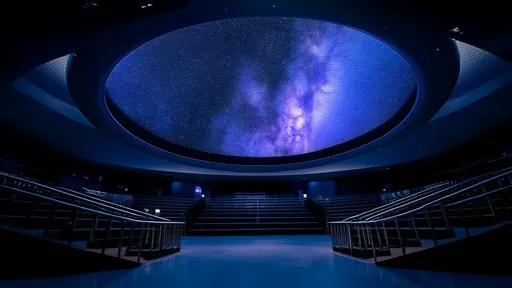The planetarium dome is one of the most captivating features of modern astronomy education and public outreach. These massive, curved screens transport audiences to the farthest reaches of the universe without ever leaving their seats. Unlike traditional flat screens, the dome creates an immersive environment that mimics the natural curvature of the night sky, making celestial observations feel astonishingly real. The technology behind these domes has evolved significantly over the decades, transforming from simple projection surfaces to sophisticated digital systems capable of rendering breathtaking cosmic vistas.
At the heart of every planetarium is its dome, a hemispherical surface that serves as the canvas for astronomical storytelling. Early domes were constructed from plaster or aluminum, but modern versions often use lightweight, high-tension fabrics or seamless acrylic panels. The curvature is meticulously calculated to ensure uniform projection quality, minimizing distortion even at the edges. This precision allows viewers to experience a seamless, all-encompassing view of stars, planets, and galaxies as if they were floating in space. The sensation of being surrounded by the cosmos is what sets dome theaters apart from conventional displays.
The magic of the planetarium dome lies not just in its shape but in the advanced projection systems that bring it to life. Traditional optomechanical projectors, like the iconic Zeiss Mark VI, used intricate systems of gears and lenses to simulate star fields. Today, digital projectors with laser illumination and fisheye lenses have taken center stage, offering unparalleled brightness and resolution. These systems can render not only static star maps but also dynamic simulations of cosmic events—supernovae exploding, galaxies colliding, or black holes warping spacetime. The dome becomes a window to the universe's grandest spectacles.
Content creation for dome theaters is an art form in itself. Unlike standard video formats, fulldome productions require specialized filming techniques and software to account for the spherical distortion. Astronomers work closely with visual artists to ensure scientific accuracy while maintaining cinematic appeal. Many modern planetariums use real astronomical data—images from the Hubble Space Telescope or gravitational wave visualizations—to craft experiences that are as educational as they are awe-inspiring. The result is a medium that can convey complex astrophysics in ways textbooks never could.
Beyond astronomy, dome theaters have found surprising applications. Some museums use them for immersive art installations, wrapping visitors in swirling Van Gogh paintings or fractal geometries. Neuroscientists employ dome-based VR to study human perception in 360-degree environments. Even military and aviation training programs utilize dome simulators for spatial orientation exercises. This versatility speaks to the unique psychological impact of hemispherical immersion—when our entire field of vision is engaged, the experience bypasses intellectual skepticism and creates profound emotional resonance.
The future of planetarium domes points toward even greater interactivity. Emerging technologies like 8K laser projection and real-time rendering engines will soon allow audiences to "fly" through the universe during live presentations, with educators controlling the cosmic journey via tablet interfaces. Haptic seats may add tactile dimensions to meteor showers or rocket launches. As these technologies converge, the line between simulation and reality will blur further, ensuring that dome theaters remain at the forefront of experiential education for generations to come.

By /Aug 13, 2025

By /Aug 13, 2025

By /Aug 13, 2025

By /Aug 13, 2025

By /Aug 13, 2025

By /Aug 13, 2025

By /Aug 13, 2025

By /Aug 13, 2025

By /Aug 13, 2025

By /Aug 13, 2025

By /Aug 13, 2025

By /Aug 13, 2025

By /Aug 13, 2025

By /Aug 13, 2025

By /Aug 13, 2025

By /Aug 13, 2025

By /Aug 13, 2025

By /Aug 13, 2025

By /Aug 13, 2025

By /Aug 13, 2025